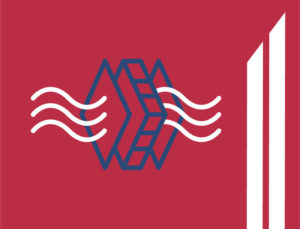The Pros and Cons of Vapor Retarders in Steel Buildings
There is a lot of confusion about metal building insulation today. People ask, “Should I insulate my new steel building? And do I need to include a vapor barrier?”
The answer is… well, maybe.
 Three things determine your metal building insulation needs:
Three things determine your metal building insulation needs:
- What is the climate like where you are building? Areas with extreme heat, cold, or humidity may require upgrade insulation.
- What is the end use for your structure? Sheltering livestock in open-sided farm buildings will not need insulation. However, you should generally insulate enclosed commercial metal buildings.
- Will the building interior be climate controlled? Structures with cooled and heated interiors have a greater need for energy-efficient insulation.
What Does a Vapor Barrier Do?
Water vapor in the air condenses wherever very cold air meets very warm air. When that happens, the water contained in the air returns to its liquid state.
Have you seen how your iced tea glass sweats on a hot summer day? Unfortunately, sweat may also form around your air conditioning ducts— and inside your walls— without a good insulation system.
Insulation vapor barriers — better described as vapor retarders — reduce the amount of water vapor entering your wall and ceiling cavities. The process of water vapor passing through building materials is called “vapor diffusion.”
Is it a Vapor Retarder or an Air Barrier?
Do not confuse vapor retarders with air barriers. Insulation vapor barriers seek to eliminate outside air from penetrating the building envelope. While vapor retarders also reduce some air leakage into the building, their main function is condensation protection.
However, vapor retarders do not seek to eliminate all air leakage, since that can trap moisture in your walls and ceiling. A vapor retarder material that breathes allows any collected moisture too slowly and harmlessly evaporate.
Consequently, breathable fabric vapor retarders beat plastic or vinyl barriers, which cannot release water vapor.
Is Building Condensation a Serious Problem?
Condensation buildup in walls and ceilings is both annoying and destructive. Left unchecked, moisture build up problems include:
- Uncomfortable interior humidity levels
- Drips from the ceiling into the interior
- Discoloration of interior walls or ceiling
- Damp, musty smells
- Mold and mildew growth
- Poor indoor air quality and possible sick building syndrome
- Rust and corrosion of metal framing and cladding
- Reduced resale value
- Damp or soggy insulation causing reduced thermal performance
How Important is the Installation of Vapor Retarders?
A vapor retarder installed incorrectly cannot fulfill its mission. In fact, the U.S. Department of Energy says poor installation can reduce a barrier’s effectiveness by as much as 40%.
Gaps, tears, sloppy seams, and slits in the barrier material allow humid air to slip through the barrier. For best results, make sure to install your building’s vapor retarder as perfectly as possible. This is especially important for structures in areas known for extreme heat, cold, or high humidity.
Therefore, choose a strong, durable vapor retarder. The material should be easy to handle. Make sure it is resistant to tears, punctures, resistant, and fire, too. Also, look for light-reflecting colors that complement your design.
Apply insulation vapor barriers to the warm side of the wall.
In most locations, that means installing vapor retarders on the interior side of the walls and ceilings. However, if the inside of the structure is refrigerated, as in a cold-storage warehouse or food processing plant, vapor barriers may be more effective on the outside of the wall or ceiling assembly.
Conclusion
Insulation vapor barriers, also known as vapor retarders, significantly lower condensation risks in extreme climates. When properly installed, a high-quality insulation system with a breathable vapor retarder saves you from humidity headaches and wasted energy dollars.
RHINO’s Vapor Barriers
RHINO Steel Building Systems offers an optional professional insulation system includes a high-quality vapor retarder.
This tough and durable fabric barrier insulation lasts and lasts. In fact, RHINO’s vapor retarder rates 300% stronger than the vinyl barriers typically offered by most metal building companies.
Its double-extrusion welded seams promise low vapor penetration, too.
This easy care fabric barrier breathes well and cleans easily. Although the bright, light-reflective white is by far our most popular color choice, other colors are available upon request.
Discuss vapor retarders with one of RHINO’s metal building specialist today. They can give you more information on our Pro-Value metal building insulation system. And, they can advise you on whether insulation vapor barriers are recommended for your location and building use.
Test our metal now by calling us at 940.383.9566. We have the best deals in steel buildings and can help understand metal building vapor barriers!
